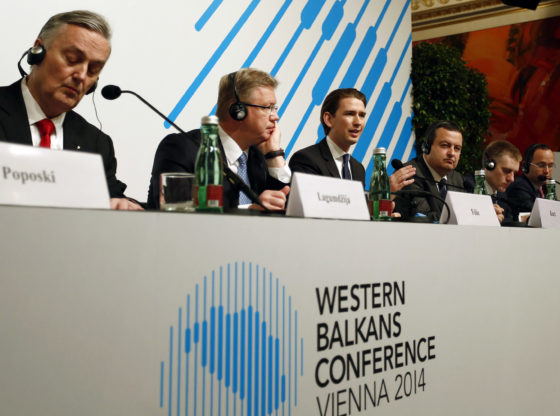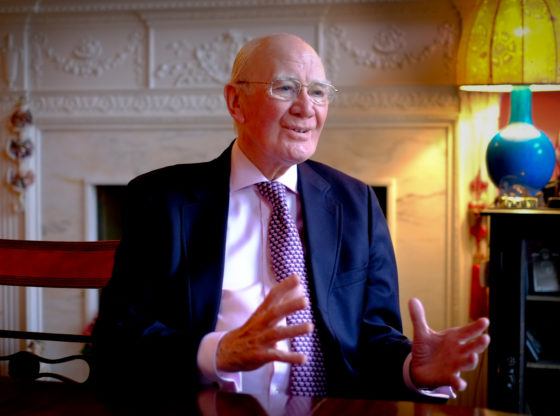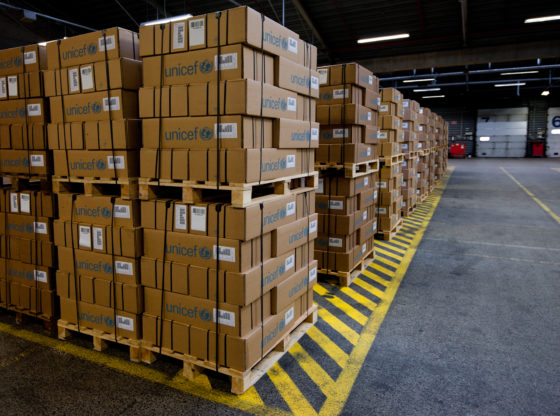Richard Ferguson considers the prospects for UK agriculture following Brexit. Urging a bold change of direction, he considers whether New Zealand’s experience during the 1980’s offers an example to follow.
A Brexit-driven reconfiguration of the UK’s food and agricultural sector suggests that a period of significant adjustment lies ahead. With the industry already in the midst of rapid technological displacement, value-chain disruption, and regulatory change, a transformative event such as Brexit appears to add to existing uncertainty. However, the process, if mapped successfully, can be a positive one. The UK’s current position is not unique. In the 1980s, the government of New Zealand instigated a reform programme to transform the country’s food and agriculture sector. The results were immediate and painful but also – over the longer term – lasting and beneficial. At the core of the transformation that shook New Zealand’s agriculture sector was a pressing need to access new markets in the face of external economic shocks and structural adjustments, such as the UK’s decision to join the then European Economic Community (EEC) in 1973. The battle about to commence for the post-EU referendum UK is set to be as brutal, complex, and ideological as that which determined the direction of the British economy in the late-1970s and early 1980s.
‘ROGERNOMICS’ AND THE TRANSFORMATION OF NEW ZEALAND’S AGRICULTURE
The removal and substantial reduction of many of New Zealand’s agricultural subsidies were a hallmark of the 1984-1989 Lange administration. The robust programme, dubbed “Rogernomics” after his Minister of Finance, Roger Douglas, led to greater international competition, the loss of thousands of manufacturing jobs, and to a number of farmers losing their farms. The abolition list included price support, income support, fertiliser subsidies, irrigation, transport, tax concessions, concessionary funding, free government services, and land development. In economic terms, however, this period of change contained plenty of positives. Fewer than 800 farms – 1% of the total number of farms in New Zealand – went out of business. Diversification into higher-value foodstuffs such as horticulture became a consistent theme. Rural tourism also took off. Productivity gains became the norm to the extent that multifactor productivity in agriculture improved at a faster rate than before the reforms, and also faster than in other parts of the economy since 1984.
The ‘Rogernomics’ programme also brought about environmental and social benefits. The removal of subsidies meant that farmers applied fertiliser more efficiently. Employment growth in the accommodation and food services averaged 2% annually between 1989 and 2012, despite these sub-sectors’ reliance on a low-wage workforce. The New Zealand experience since the 1980s is instructive for a variety of reasons. Significantly, it indicates that a subsidy-free agricultural landscape not only can deliver economic and financial gains, it can also deliver wider social and environmental benefits. It is important to bear this in mind as we approach Brexit negotiations. The future of British agriculture beyond 2020 when the Common Agricultural Policy (CAP) is likely to be reformed could – if handled wisely – deliver similar gains.
CAP AND THE UK AGRI-FOOD SECTOR
The CAP was implemented initially in 1962 when the EU’s predecessor, the EEC, was composed of six countries. By 1984, when the EEC comprised ten countries and two years before it increased to twelve members, the CAP accounted for over 70% of the EEC’s annual budget. Even with four enlargements since 1984, the CAP still consumed almost €55 billion (40%) of the current EU’s €145 billion budget in 2016. Despite its weighty pull on the EU budget, it is surprising to note that most of the discussion around the UK’s future commercial relationships with the EU has focused on other key industrial sectors such as the automotive, finance, and business services.
Yet the UK’s agri-food sector is hugely important. In 2014, it contributed £108 billion (6.8%) to national Gross Value Added, employed almost 4 million people and accounted for 13.5% of national employment. Food and drink exports amounted to £18 billion in 2015, while imports amounted to £39 billion. EU trade with the EU accounted for some 60% of exports and 70% of imports. Indeed, almost half of the food consumed in the UK in 2015 was imported. Criticisms of the CAP are legion: it reinforces market distortions, inhibits free trade, creates social injustice, promotes environmental degradation, reduces food security and promotes a negative image of the EU. With or without Brexit, EU subsidies via the Basic Payment System (BPS) are scheduled to remain in place until 2020. Can this system survive beyond 2020?
THE BREXIT CROSSROADS
From a post-Brexit policymaker’s perspective, where do you go from here? As we see it, the time has now come to abandon the BPS and re-pivot the UK’s current agricultural efforts into wider technological ambitions, which cover trade, aid, and economic diplomacy. A strategy which diversifies UK agriculture from its current configuration and structures will require the alignment and co-operation of the separate – and sometimes competing and conflicting – interests of several government departments including the Foreign and Commonwealth Office (FCO), the Department for International Development (DFID), the Department for International Trade (DIT), and the Department for Environment, Food and Rural Affairs (DEFRA).
Consider the geo-strategic imperative to feed a world of some 11 billion people by 2050, securely and sustainably. According to the United Nations’ Food and Agriculture Organization (FAO), almost 91% of the additional output from farming will come from intensification and higher yields; only 9% will come from increased farming area. In other words, farming output growth in the future depends critically on the greater use of agricultural technologies (ag-tech), ranging from equipment to genetics.
The UK government estimates that the global ag-tech market is worth US$400 billion. The sector is estimated to account directly for £14 billion in value-added and over half a million jobs in the UK. Given its strength in agricultural research capabilities, the UK is well positioned to participate in a global ag-tech revolution. UK government expenditure on ag-tech R&D was approximately £320 million in 2012/13. Government estimates for the equivalent industry R&D spend were approximately £496 million. Contrast that with the near £3 billion spent on annual BPS payments under the CAP.
Given its strength in agricultural research capabilities, the UK is well positioned to participate in a global ag-tech revolution.
An obvious strategic conundrum is how to bridge the funding gap in the world’s malfunctioning food and agriculture markets. The funding gap is driven, partly, by the fact that institutional-equity investors seek out investment opportunities with a proven track record or, at a minimum, some proof of concept. A professional investor also requires some scale and liquidity. In short, it can be difficult to raise institutional equity or debt financing for green-field investment in challenging environments. This is where DFID needs to play a more vigorous role and broaden the ambitions of schemes like its £70 million Agri-Tech Catalyst. The British Government, via DFID, disburses an annual aid budget of £11 billion. This budget, one of a few protected under the previous coalition government (2010 - 2015), has a wide development remit. Its developmental goals can appear to be, if not mutually exclusive, at least distant from the everyday objectives of the private sector. There is a pressing need for the private and public to bridge that funding gap.
OPTIMISING THE IMPACT OF THE DFID BUDGET
DFID’s main aims are to address poverty, disease, mass migration, insecurity and conflict. Its overarching goal is to build a safer, healthier, more prosperous world for people in developing countries and in the UK. Specifically, DFID targets British aid to promote economic growth and wealth creation, to improve the lives of women in the developing world, to prevent climate change and so on. These are worthy aims but they prompt important, recurring, questions. How effectively is the deployment of DFID’s budget achieving these aims? And to what extent does the UK benefit economically from the various schemes that it funds?
In 2016, Ian Birrell – a British journalist and prominent DFID critic – questioned whether Britain’s aid budget would be better spent on offering scholarships to the young and bright from emerging economies to benefit from a British secondary or higher education. He noted how lifelong cultural ties easily translate into long-standing economic benefits too. Likewise in food and agriculture. Would it be more strategically sensible to fund the PhDs of overseas students at the Centre for Agriculture & Biosciences International? Would there be added long-term value if tomorrow’s farmers in Nigeria and Bangladesh could be educated at the Royal Agricultural University?
John Kenneth Galbraith observed the growing complexity of industrial processes in the 1960s. Today, technological, scientific and managerial expertise continues to transform food and agriculture value chains. Meanwhile, DFID has continued to focus on smallholder farms. While this may be a valid strategy given its objectives, it is an approach which risks ignoring vital complicating factors: farms are getting bigger; the value chain is getting increasingly sophisticated; and capital intensity is the future. The features at play invoke the theories of the economist Arthur Lewis who observed that as rural migration to urban areas accelerates, the cheap supply of labour dries up and the rural economy is forced to swap labour for capital. In short: while smallholders will be with us for many decades to come, there is a long-term trend towards larger-scale sophisticated agricultural operations and this is reinforced by rural-urban migration flows.
LOOKING FORWARD: KEY QUESTIONS
The question is how the UK food and can transform its approach to meet, and lead, the changes to come. At a time when the UK food and agriculture sector has to consider how it will access new overseas markets, using DFID as a ‘launch pad’ or ‘incubator’ becomes compelling. DFID projects have considerable capacity to widen their remit beyond smallholder schemes or small entrepreneurial groups into something much broader in scope, and more capable of providing long-term food security and commercial opportunities. The question then becomes one of how best to marry commercial interest and social concerns. In this context, the concept of ‘shared value’ is pertinent.
DFID projects have considerable capacity to widen their remit beyond smallholder schemes or small entrepreneurial groups into something much broader in scope, and more capable of providing long-term food security and commercial opportunities.
It essentially refers to how a company’s competitiveness is linked to the communities around it. In short, economic and social progress are interdependent. Some might regard ‘shared value’ as a sop to business interests in much the same manner that some elements of the Corporate Social Responsibility (CSR) agenda have been criticised. It could be argued that the modern concept of shared value has a root in Adam Smith’s “The Theory of Moral Sentiments” which pre-dated his later tract “An inquiry into the nature and causes of the Wealth of Nations” by 17 years. In conclusion, these are hardly untested notions.
As we look ahead to a post-Brexit world, experiences elsewhere suggest that there are grounds for optimism for the UK’s food and agriculture industry. The changes spurred by ‘Rogernomics’ during the 1980s transformed New Zealand’s agricultural sector from an inefficient, subsidised industry into a beacon for value-added products and services sold across the world and all without subsidy. Brazil has also shown – via the Brazil Agricultural Research Corporation (EMBRAPA) – that it can promote its ag-tech capabilities to project soft power overseas. The UK, with some political ambition and a clearly thought out strategy for the post-Brexit landscape, can do the same.
Richard Ferguson is the founder of Ferguson Cardo, a Glasgow-based consultancy which provides strategic advice, independent consulting, and research across the food, agriculture and biosciences sectors to a range of companies, governments, financial institutions and NGOs. He has lived, worked and studied in Asia, Africa, Continental Europe, Latin America, and the UK, and has written for a wide range of publications, policy institutes,and think tanks. Richard is on Twitter at: @richard_agri
Featured photo: A field of wheat. By Lisa Jarvis [CC BY-SA 2.0], via Wikimedia Commons










